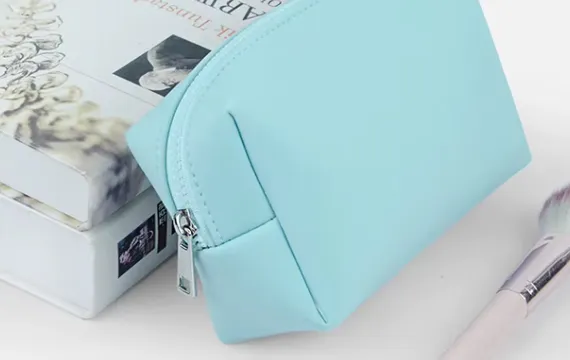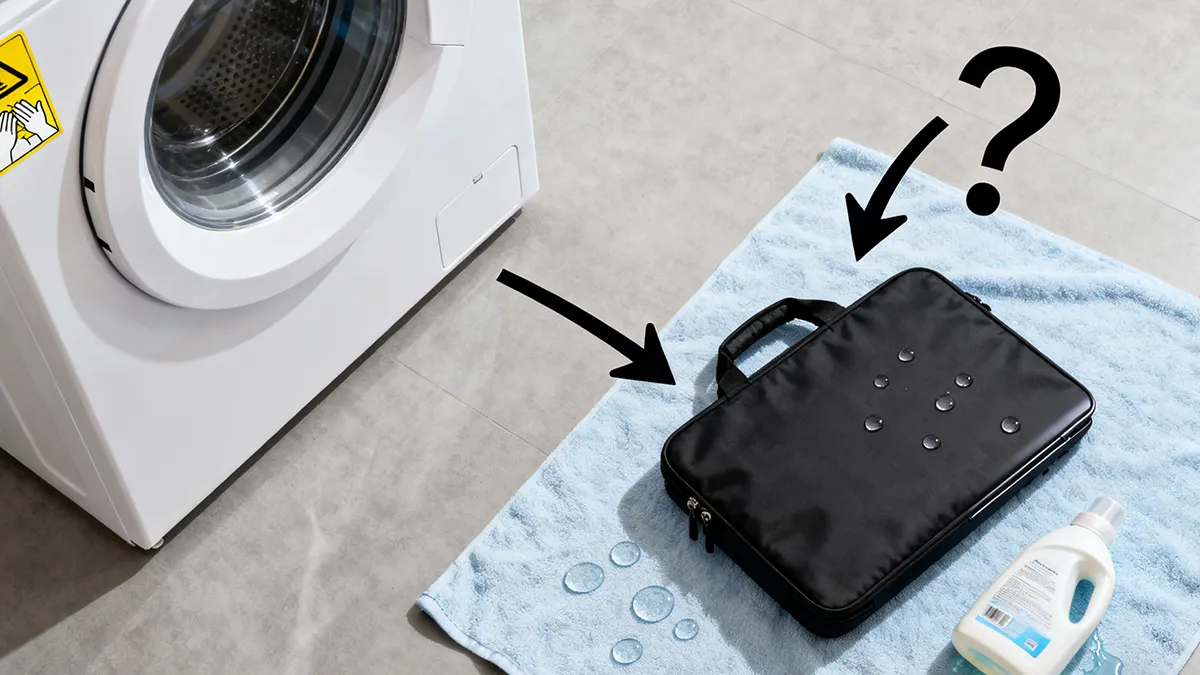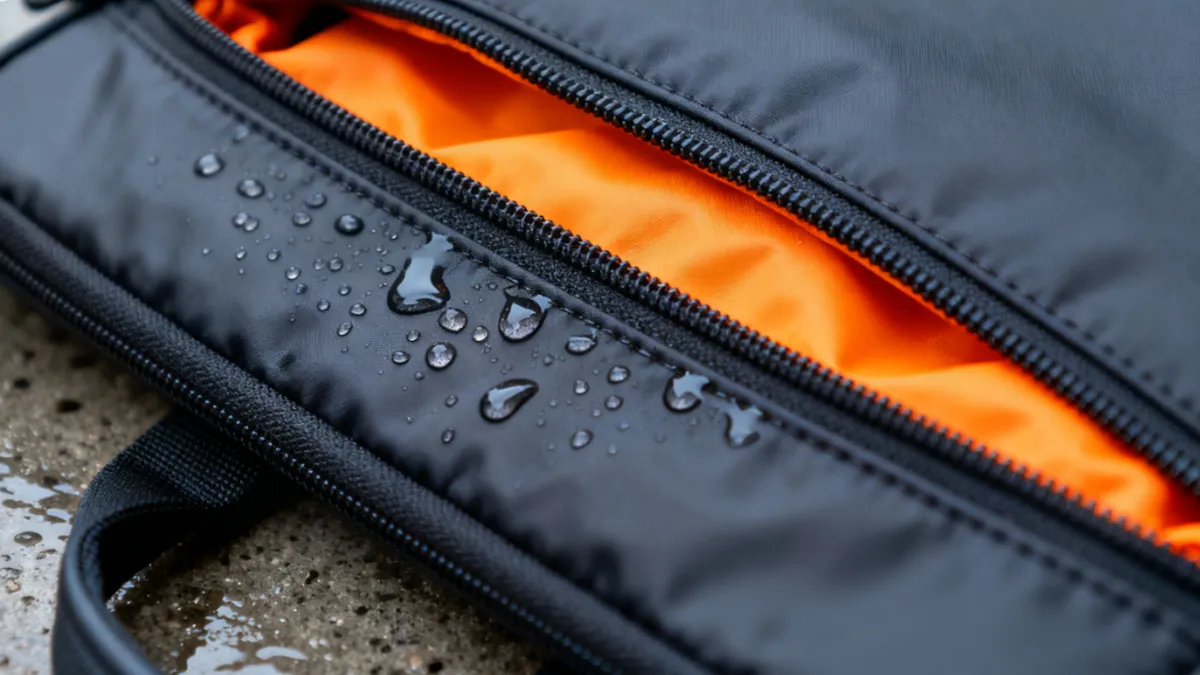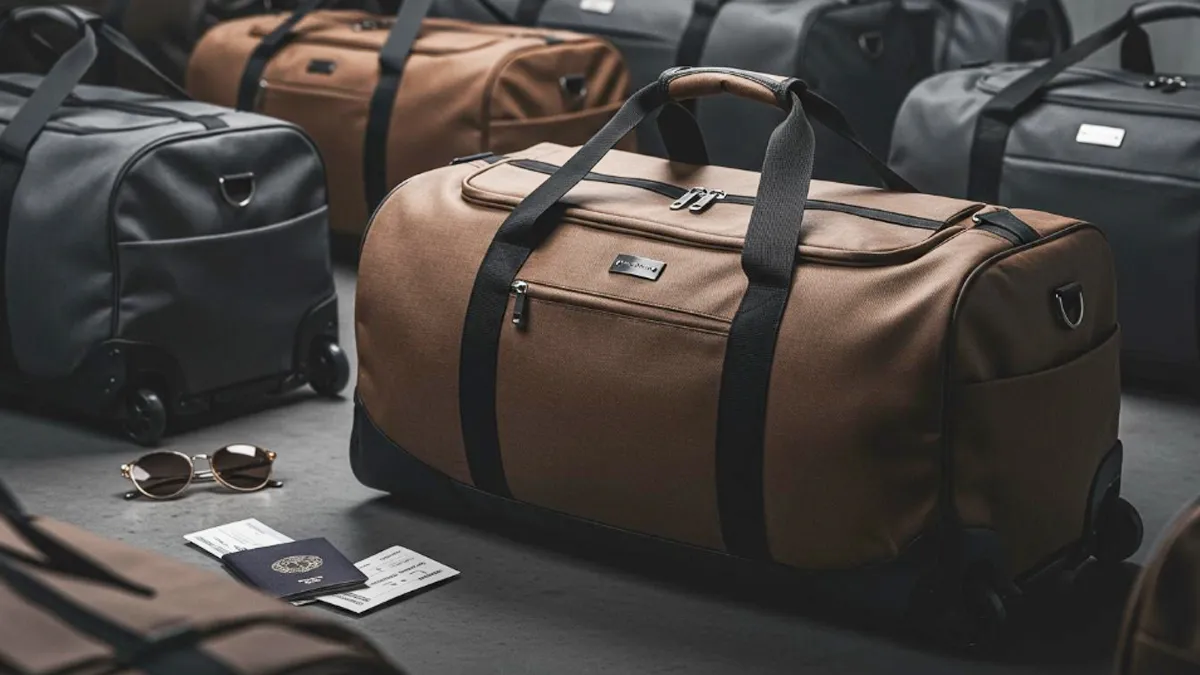Neoprene as a material is water resistant and can block splashes and light rain, but a finished neoprene bag may not be fully waterproof unless the seams, zippers and closures are sealed or designed for submersion. In plain terms neoprene helps a lot, but the bag construction decides real world waterproof performance.
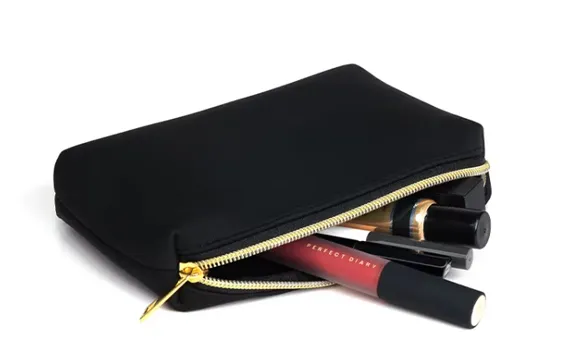
What is neoprene and why does it matter for water
Neoprene is a synthetic rubber created to be flexible, insulating and resistant to water. The material comes in different grades and densities. Some neoprene is closed cell which resists water entering the material itself. Other neoprene is laminated or coated with a fabric that changes breathability and feel.
Because neoprene is inherently water resistant it makes an excellent base for bags that need splash protection or thermal insulation. But water resistance at the material level is only part of the story. Bag details like seams, stitch type, zippers and any glued or sewn pockets determine whether water stays out in real conditions.
Waterproof versus water resistant versus water repellent
Before we go deeper it helps to be clear on terms.
- Waterproof means no water gets through, even under submersion, usually because of sealed seams and waterproof closures.
- Water resistant means the material and design resist water but are not guaranteed against heavy exposure.
- Water repellent means the material sheds water quickly but may soak through over time.
Neoprene material is often water resistant or water repellent. To get true waterproof performance you need additional construction features like taped seams, waterproof zippers, or welded seams.
How neoprene fabric behaves with water
Neoprene fabric behavior depends on construction.
- Single layer neoprene gives good splash resistance and thermal insulation.
- Laminated neoprene adds a fabric face for durability and appearance but may affect breathability.
- Coated neoprene or laminated films can improve waterproofing at the surface.
- Closed cell neoprene resists water absorption better than open cell neoprene.
Seams are the weak point. A seam stitched with thread will let water in through needle holes unless sealed. Manufacturers improve resistance by taping or welding seams. Zippers can allow water entry unless they are waterproof zippers or covered by a storm flap.
Real world performance: everyday scenarios
Here is a quick table that shows likely neoprene bag performance in common situations.
| Scenario | Neoprene material alone | Typical finished bag without sealed seams | Finished bag with sealed seams and waterproof zipper |
|---|---|---|---|
| Light rain or drizzle | Excellent | Good | Excellent |
| Heavy rain during long exposure | Good | Fair to poor | Good to excellent |
| Splash from puddle or beach water | Excellent | Fair | Good to excellent |
| Full submersion or dropped in water | Poor | Poor | Good only if designed for submersion |
From this table you can see that many neoprene bags keep out light moisture and splashes very well. For electronics or valuables you should pick a bag where seams and closures match your needs.
Common neoprene bag types and expected water protection
Neoprene is used for many bag types. Each has different realistic water expectations.
- Lunch bags: usually water resistant and insulated. Good for spills and light rain, not designed for submersion.
- Laptop sleeves: neoprene protects against splashes and light moisture and provides cushioning. It is not a substitute for a sealed waterproof case.
- Beach totes and wet bags: often use neoprene so the bag resists water and sand and can be rinsed easily. Some wet bags include sealed seams for better performance.
- Camera and gear pouches: may have padded neoprene and a water resistant outer layer, yet they often rely on additional liners or rain covers for full protection.
- Dry bags: usually made from TPU or PVC and are designed for submersion. Neoprene is not a dry bag material unless specially engineered with welded seams and waterproof closures.
If you need to protect sensitive gear from rain choose products designed for that level of protection.
How manufacturers add waterproofing to neoprene bags
Good water protection is achieved through design choices.
- Sealed seams. Seams can be taped or welded to close needle holes. This is critical for waterproof claims.
- Waterproof zippers. These zippers have rubber or coated profiles that block water.
- Overlapping storm flaps. A flap over a zipper keeps water from being driven in by wind.
- Inner liners. A waterproof inner liner can create a secondary barrier even if the outer shell gets wet.
- Coatings and laminates. Adding a thin film or laminate improves surface repellency.
- Drainage and vents. For bags used wet, small drain holes or mesh vents help water drain and prevent retention.
When you look at product specs watch for explicit terms like sealed seams welded seams waterproof zipper or IP rating. Those details indicate a higher water protection standard.
Can neoprene protect electronics and camera gear
Neoprene gives padding and water resistance so it can protect electronics from light splashes and brief rain. For heavy rain or accidental drops into water do not rely on neoprene alone. Use a fully waterproof case or a neoprene bag specifically built with sealed seams and waterproof closure.
A common setup is to use neoprene for shock protection and an additional waterproof pouch for liquid protection. This offers both cushioning and robust water defense.
Caring for neoprene bags to maintain water resistance
Care matters more than most buyers realize. Neoprene is durable but can degrade if mistreated.
- Rinse off salt and chlorine after beach or pool use. Salt and chlorinated water will break down coatings and fabrics over time.
- Avoid prolonged direct sunlight exposure. UV weakens material and accelerates fading.
- Dry the bag fully before storage to prevent mildew. Hang open to air dry.
- Clean with mild soap and water. Harsh solvents degrade neoprene.
- Avoid high heat and do not tumble dry. Heat can warp or delaminate layers.
With simple care the neoprene will keep its protective qualities for a long time.
How to waterproof a neoprene bag further
If you already own a neoprene bag and want extra protection try these options.
- Add a waterproof liner bag inside for valuables. A small dry bag or sealed pouch works well.
- Use a water repellent spray designed for neoprene and synthetic fabrics. Test a small area first.
- Install a protective storm flap over zippers with a simple fabric modification or strap.
- For custom applications ask a manufacturer about welded seams or taped seam finishes. Custom builds can meet high water resistance needs.
These changes can dramatically improve real world performance without replacing the whole bag.
Alternatives if you need full waterproofing
If the task requires total water exclusion consider these materials instead of neoprene.
- TPU or PVC coated fabrics are common in dry bags and proven for submersion.
- Waxed canvas is water resistant and can be reproofed but is heavier.
- Laminated nylon and coated polyester can be very waterproof when seams and zippers are sealed.
Neoprene holds advantages for insulation and comfort. For full waterproof protection look for bags built to a specific waterproof standard.
Buying checklist: what to look for when you want water protection
When shopping for neoprene bags check the following.
- Are the seams sealed taped or welded
- Is the zipper water resistant or waterproof
- Does the product mention waterproof liner or IP rating
- What is the recommended use: splash protection or submersion safe
- Are materials rated for UV and salt resistance if you plan beach use
- Reviews and tests from users about rain or pool incidents
A clear product description and good reviews are the fastest way to know expected performance.
Comparison table: neoprene vs other waterproof materials
| Material | Waterproof by itself | Breathability | Best use cases | Weight |
|---|---|---|---|---|
| Neoprene | Water resistant to good | Low breathability | Insulation, padding, splash protection | Medium |
| TPU or PVC coated fabric | Waterproof when seams sealed | Low | Dry bags, submersion protection | Medium to heavy |
| Laminated nylon | Waterproof with sealed seams | Moderate | Backpacks, camera rain covers | Light to medium |
| Waxed canvas | Water resistant, reproofable | Moderate | Everyday bags, heritage style | Heavy |
Neoprene wins for cushioning and insulation while other materials win for watertight protection.
Myths about neoprene and waterproofing
Some common myths merit quick debunking.
- Myth neoprene always makes a bag waterproof. Reality neoprene material helps but seams and zippers matter most.
- Myth neoprene protects electronics fully. Reality neoprene helps shield from splashes but is not guaranteed for submersion unless engineered for it.
- Myth all neoprene is the same. Reality there are different densities coatings and laminates that change performance.
Understanding these distinctions saves disappointment and helps you choose the right product.
Practical use cases and product ideas
If you need bags for commuting, consider neoprene laptop sleeves for padding and rain resistance but carry an additional rain cover or waterproof case for electronics on wet days. For meals neoprene lunch bags keep food insulated and resist spills. For beach gear neoprene beach totes resist sand and dry quickly. If you sell or manufacture consider offering optional taped seams or waterproof zipper upgrade for customers who need higher protection.
Conclusion
Neoprene offers great water resistance and comfort. When you ask are neoprene bags waterproof remember that the finished bag is what matters. Check seams zippers liners and care instructions. If you want carry items that must stay dry under heavy exposure choose a bag specifically engineered with taped seams and waterproof closures.
We are a neoprene bag manufacturer and we design options that range from splash resistant lunch bags to sealed designs for higher water protection. If you need custom neoprene solutions with sealed seams waterproof zippers or tailored liners we can help with design and production for retail or wholesale. Reach out to discuss technical specifications and sample options.
FAQ
What does water resistant mean for neoprene bags
Water resistant means the material repels water and handles light exposure. Finished bag design determines real performance.
Can neoprene bags be used at the beach
Yes many neoprene bags excel at beach use because they resist sand and splash. Rinse salt off after use to keep bag in good condition.
Will a neoprene bag float if dropped in water
Neoprene itself is buoyant. A sealed neoprene pouch can float but a bag with wet contents may sink depending on weight and air trapped.
How do I dry a wet neoprene bag
Rinse to remove salt or sand and hang open to air dry. Do not use heat or tumble dry.
Are neoprene lunch bags waterproof inside
Neoprene lunch bags often have an inner lining that is water resistant and easy to wipe. They may handle leaks but not full submersion.
Can I wash a neoprene bag in the washing machine
Many neoprene items can be hand washed in cool water with mild soap. Machine washing may stress seams and is not recommended unless manufacturer allows it.
How long does neoprene water resistance last
With proper care neoprene stays water resistant for years. UV exposure salt and harsh chemicals shorten lifespan.

